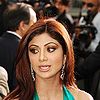- Mangaloreans
-
Mangaloreans 



Aishwarya Rai
Genelia D'Souza • Freida Pinto
Shilpa ShettyRegions with significant populations  India
India→South Canara (2001) 3,009,973[1][2] Languages Religion Mangaloreans (Tulu: Kudladaru; Konkani: Kodialchi; Kannada: Manglurnavaru; Beary: Maikaaltanga) are generally considered to be a collection of ethnic group from the South Canara district on the south western coast of India. It can also refer to residents of Mangalore.
Contents
History
Main article: History of Tulu NaduHistorically, Tulu Nadu included the two separate lands of Haiva and Tuluva. The Ballal Kings of Sullia had ruled this area around 1100 years back. The Bunt/Nair, Brahmin migration to Tulu Nadu might have happened during the lifetime of the Kadamba king Mayuravarma at 345 AD. Madhvacharya in the 13th century built the eight monasteries (Matha) in Udupi.
During the rule of Vijayanagara Tulu nadu was administered in two parts—Mangaluru Rajya and Barakuru Rajya. Tulunad was the original homeland of the dynasty that founded the Vijayanagar Empire based in eastern Karnataka. Tulu Nadu was governed by feudatories of the Vijayanagara Empire until the 17th century. The longest reigning dynasty of Tulu Nadu was the Alupas. They were the feudatories of the prominent dynasties of Karnataka. The Kadamba dynasty of Banavasi was the earliest, under which the Alupas flourished. Later the Rashtrakutas of Manyakheta, Chalukyas of Badami, Chalukyas of Kalyani, Hoysalas of Durasamudra and Rayas of Vijayanagara were the overlords. The Alupas, however, were independent and their subordination was nominal at best. They ruled until the Vijayanagara kings totally dominated the Tulu Nadu from 14th to the 17th centuries. The region became extremely prosperous during Vijayanagara period with Barkur and Mangalore gaining importance. After the decline of the Vijayanagara Empire, the Keladi Nayakas of Ikkeri controlled much of Tulu Nadu.
Over the following many centuries, more ethnic groups migrated to the area. Konkanis arrived by sea, as Mangalore was a major port that served not only the Portuguese but also the Arabs for maritime trades. Jains were already a prominent group and even today are uniquely preserved in Tulu Nadu. Though small in number, the Jains left behind indelible reminders of their glory with temples (bastis) in (Moodabidri) and monolithic statues of Bahubali, the gomateshwara, in Karkala, Venoor and Dharmasthala. In the 16th century, there was a large influx of Catholics to Tulu Nadu from Goa. They built excellent educational institutes and contributed to the development of education in the region. The Muslim community of Tulu Nadu were basically Arab traders who married local women and settled there. Some of them speak the Beary language, which is a mix of Tulu and Malayalam and others speak Urdu.
Demographics
Majority of Mangaloreans belong to the Tuluva ethnic group. Earlier the Tuluvas ruled over a large empire known as Vijayanagar Empire. However with the loss of empire, the Tulu peoples have concentrated in the coastal areas. The next largest group are the Konkanis, in particular the Saraswat Brahmins, Daivajnas as well as the Mangalorean Catholics whose ancestors migrated here from Goa, due to persecution by the Portuguese. Other groups who settled here include the Kannadigas and Bearis.
Culture
Main article: Culture of Mangalore- See also: Tulu Nadu (Culture)
Cuisine
Mangalorean cuisine is largely influenced by the South Indian cuisine, with several cuisines being unique to the diverse communities of the city. Coconut and curry leaves are common ingredients to most Mangalorean Curry, as are ginger, garlic and chili. Mangalorean Fish Curry is popular dish in Canara. The Tulu community's well-known dishes include Kori Rotti (dry rice flakes dipped in gravy), Bangude Pulimunchi (silver-grey mackerels), Beeja-Manoli Upkari, Neer dosa (lacy rice-crêpes), Boothai Gasi, Kadabu, and Patrode. The Konkani community's specialities include Daali thoy, beebe-upkari (cashew based), val val, avnas ambe sasam, Kadgi chakko, paagila podi, and chana gashi. Vegetarian cuisine in Mangalore, also known as Udupi cuisine, is known and liked throughout the state and region. Since Mangalore is a coastal town, fish forms the staple diet of most people.[3] Mangalorean Catholics' Sanna-Dukra Maas (Sanna –idli fluffed with toddy or yeast; Dukra Maas –Pork), Pork Bafat, Sorpotel and the Mutton Biryani are well-known dishes. Pickles such as happala, sandige and puli munchi are unique to Mangalore. Shendi (toddy), a country liquor prepared from coconut flower sap, is popular.[4]
Traditions
Many classical dance forms and folk art are practised among Mangaloreans. The Yakshagana, a night-long dance and drama performance, is held in Mangalore,[5] while Hulivesha (literally, tiger dance), a folk dance unique to the city, is performed during Dasara and Krishna Janmashtami.[6] Karadi Vesha (bear dance) is another well known dance performed during Dasara.[4] Paddanas (Ballad-like epics passed on through generations by word of mouth) are sung by a community of impersonators in Tulu and are usually accompanied by the rhythmic drum beats.[4] The Bearys' unique traditions are reflected in such folk songs as kolkai (sung during kolata, a valour folk-dance during which sticks used as props), unjal pat (traditional lullaby), moilanji pat, and oppune pat (sung at weddings).[7] The Eucharistic procession is an annual Catholic religious procession led on the first Sunday of each New Year.[4]
World record
On 26–27 January 2008, a Konkani cultural event, Konkani Nirantari, held in Mangalore by a Mangalorean organization, Mandd Sobhann, entered the Guinness Book of World Records for non-stop singing of Konkani hymns. Mandd Sobhann members sang for 40 hours, surpassing the old record of 36 hours held by a Brazilian musical troupe.[8][9][10]
Notable Mangaloreans
- Aishwarya Rai – Bollywood actress
- Anushka Shetty – Kollywood actress
- Budhi Kunderan – Indian Test Wicketkeeper Batsman
- Freida Pinto – Indian actress and Model
- Shilpa Shetty – Bollywood actress
- Sunil Shetty – Bollywood actor
- Prakash Rai – Actor, Multiple National Awardee
- Genelia D'Souza – Indian actress
- Ravi Shastri – World famous cricketer
- Deepika Padukone – Indian actress
- Amrita Rao – Indian actress
- Vijay Mallya – Entrepreneur
- K. S. Hegde – Former Speaker of Lok Sabha
- George Fernandes – Former Defence Minster
- Sheetal Mallar – Model
- Victor Rodrigues – Novelist and short story writer
- V.J.P. Saldanha – Novelist
- Devi Prasad Shetty – Philanthropist
- Aravind Adiga – Booker Prize winner
- Sandeep Chowta – Music composer
- Ganesh Hegde – Choreographer
- Sneha Ullal – Bollywood actress
- Shamita Shetty – Bollywood actress
- Shweta Shetty – Singer
- Reshma Shetty – British-born American actress
See also
References
- ^ Basic Data Sheet (Dakshina Kannada District, Karnataka)
- ^ Basic Data Sheet (Udupi District, Karnataka)
- ^ "Typically home". Chennai, India: The Hindu. 2007-08-11. http://www.hindu.com/mp/2007/08/11/stories/2007081150880400.htm. Retrieved 2008-07-09.
- ^ a b c d D'Souza, Stephen. "What's in a Name?". Daijiworld Media Pvt Ltd Mangalore. http://www.daijiworld.com/chan/exclusive_arch.asp?ex_id=726. Retrieved 2008-03-04.
- ^ Prabhu, Ganesh (2004-01-10). "Enduring art". Chennai, India: The Hindu. http://www.hindu.com/mp/2004/06/10/stories/2004061000340300.htm. Retrieved 2008-07-20.
- ^ Pinto, Stanley G (2001-10-26). "Human `tigers' face threat to health". The Times of India. http://timesofindia.indiatimes.com/articleshow/354160109.cms. Retrieved 2007-12-07.
- ^ "Beary Sahitya Academy set up". Chennai, India: The Hindu. 2007-10-13. http://www.hindu.com/2007/10/13/stories/2007101361130300.htm. Retrieved 2008-01-15.
- ^ "Mangalore: Guinness Adjudicator Hopeful of Certifying Konkani Nirantari". Daijiworld Media Pvt Ltd Mangalore. 2008-01-25. http://www.daijiworld.com/news/news_disp.asp?n_id=42855&n_tit=Mangalore%3A+Guinness+Adjudicator+Hopeful+of+Certifying+Konkani+Nirantari. Retrieved 2008-02-01.
- ^ Konkani finds its way into the Guinness Book of World Records
- ^ Konkani Group Creates Singing Guinness Record
Categories:- Mangalorean society
- Social groups of Karnataka
Wikimedia Foundation. 2010.


